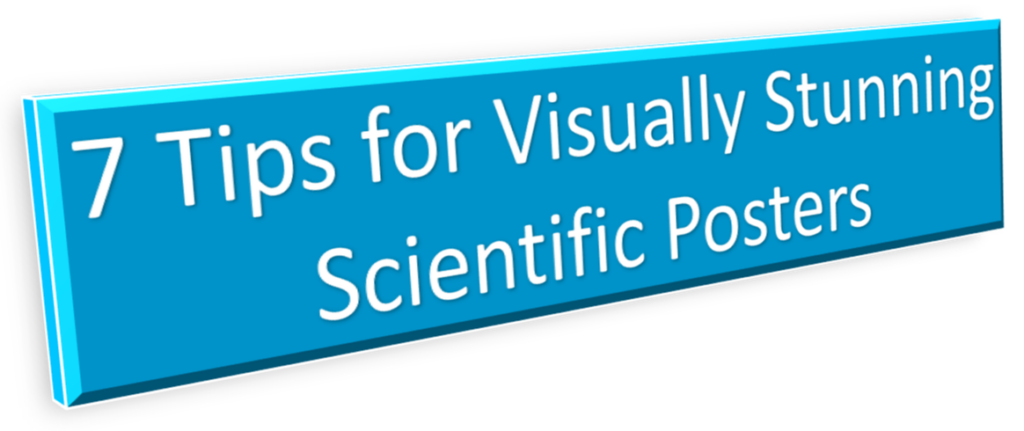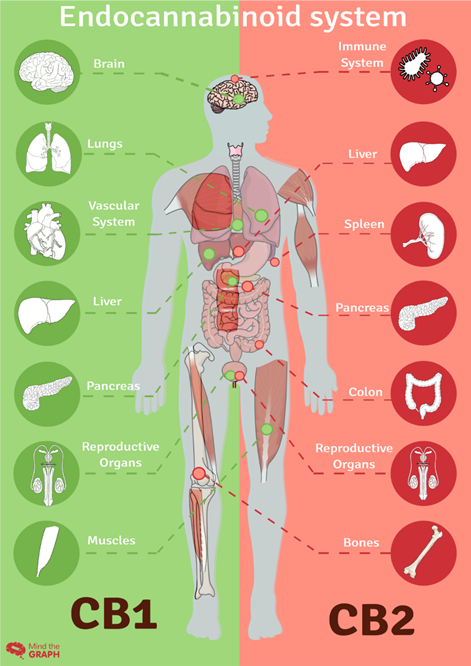A scientific poster is one of the best ways to visually represent your research.
In this guide, we’ll discuss 7 tips on how to design an outline and develop a visually stunning poster that will stand out amongst hundreds of others.

Whether you are a student looking to score better grades or a researcher wanting to promote your research, scientific posters can be a powerful tool. When done right, scientific posters help you strike the right chord with your viewer. Your poster will have a powerful impact, help you spread the right message, and build trust in the scientific community.
1. Define the message and objective
Determine the objective of your scientific poster. Every poster has an objective. It can be spreading a certain message, promoting your research, improving your online presence, or making way for new opportunities. Based on these objectives, your poster may look totally different from what you first imagined.
See how the cerebellum, a part of our brain, is highlighted in the below image to deliver intended messages comprehensively.

Here’s another poster that utilizes different colors to differentiate two cannabinoid receptors, CB1 and CB2.

2. Understand your audience
Based on your objectives for the scientific poster, the type of your audience will also vary.
Are you going to present your poster at a conference of American Chemical Society (ACS) or American Association for the Advancement of Science (AAAS), where you will find subject matter experts? Or, is your audience going to be relatively inexperienced, like people attending a weekend talk at a science cafe or other outreach event?
Based on the kind of audience, the way they perceive your scientific poster will differ.
For example, if your audience consists of researchers who are already familiar with your topic, then your poster should match their expertise. So, for this case, you can create infographics with advanced details about your research without the fear the viewer will become frustrated. For this audience, if your poster is very basic and consists of insights that the audience is already aware of, then they may not be interested in your poster.
On the other hand, if your audience is inexperienced, you can highlight the solution with bold fonts and add minimum layers so that your message is delivered effectively. You can keep one or two graphics in your poster and let the text explain the core idea. This way, an inexperienced audience can engage fully with your poster.
3. Do your research
Before starting the outline for your poster, ensure you do thorough research on the topic. Apart from your own insights, this will allow you to gather additional findings from other research available on the topic. You may have viewers from very different experience levels and thus questions or comments that span a breadth of the topic.
Make sure to be thorough with your research. Find some other scientific posters on the same topic for inspiration. Using all the research that you have gathered, you can now create the outline for your poster.
4. Create an outline
An outline is super-important before you start working on your poster. Developing a scientific poster may take a lot of your time and effort. So, you need to make sure that you are completely sure about the outline of your poster before you begin with the creation process.
For the outline, determine the kind of content and images that you want to use.
For example, are you eyeing to add vector graphics, or need royalty-free stock photographs in the poster? Do you need animated characters (like the image below), or want to keep just text in the poster?

You can just mention the highlights of your posters as bullets in the outline. It’s okay if you don’t go deep and mention every other detail in the outline. Note what you want to keep in the poster and make a list of those things in order of their importance in descending order.
Run your outline through multiple iterations. You want to ensure that it aligns with your objective, matches your audiences’ interest, and goes well with the topic at hand.
5. Select content
Once you are ready with a basic outline and idea for your science poster, the next step is to pick the content, both textual and visual, you want to add. Usually, the word count of a science poster will vary anywhere between 300 to 800 words.
Once again, ensure that your content aligns with the objective of your poster. Also, ensure that the language and tone of the content resonate with your audience. You can also check the content with the subject matter experts or anyone who fits your audience. This way, you’ll get a fair idea if your content is effective or not.
6. Create the layout
By now, you have the outline and the content and you can create a rough layout for your poster on a sheet of paper. Start by taking inspiration from other science posters around the same topic and checking what most appeals to you about them.
You can also check some science poster templates online to get an idea. Creating a layout is essential because the visual elements of a poster help make it impactful.
7. Design your scientific poster
Finally, it’s time to start designing your scientific poster. Before you start designing ensure that you are happy with your layout. Changing the layout of the poster may get challenging after you start designing it.
You can also hire a graphic designer to get your scientific poster designed. You should try and give a very thorough brief of what is expected from the poster. Along with the layout, also convey things related to the color, border, shape, and other similar things. The more detailed your brief is, the better the final poster will be.
Or, another way to go about it is to use an online science graph maker tool where you can easily design your scientific poster based on your requirements. Ensure that the tool has lots of templates and easy to use science logos to start with. This will make your design process easier.
A great perk of developing your science poster using an online tool is that you can change it whenever you want. You don’t have to run it through your designer every time you need changes in your poster.
Start designing!
There you have it! The comprehensive guide on how you can create outlines and develop a scientific poster. If you follow these tips step-by-step, you’ll definitely come up with a high-quality, visually appealing scientific poster that intrigues every viewer.



Great article! The information about making scientific posters is so helpful for me. Now, I am able to create a complete poster by using these tips. Thank you for sharing this amazing blog post.